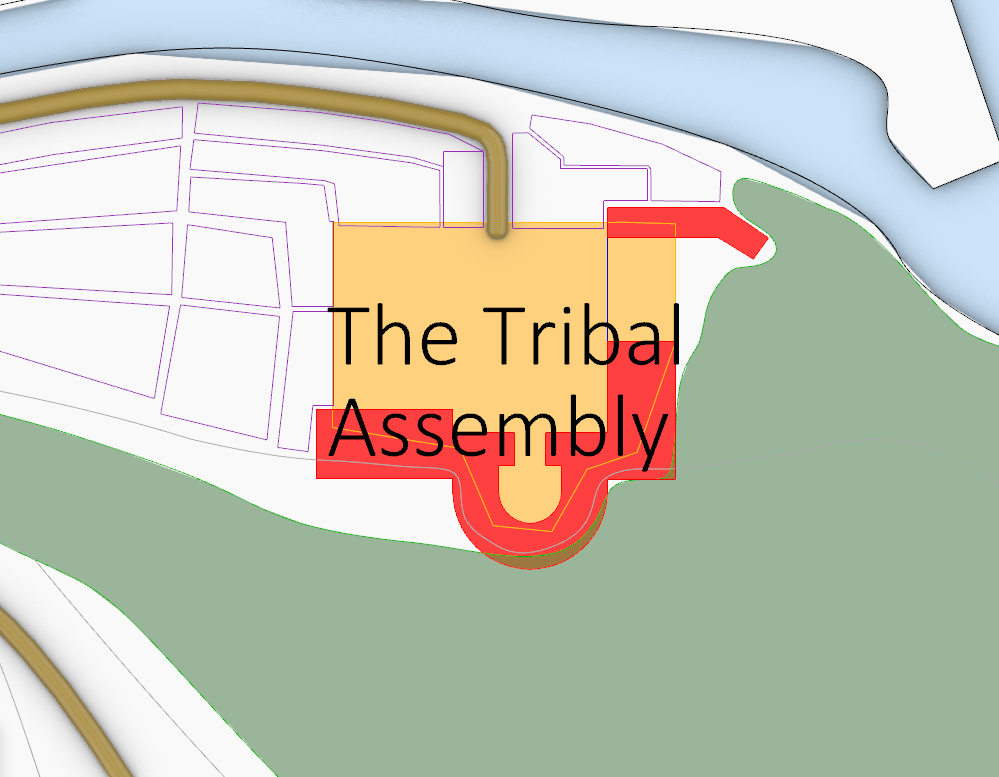The Itza Empire was never highly centralized; the maritime realm comprised numerous tribes bound to the ruling Itza tribe through vassal agreements. These agreements obligated them to provide aid during times of war and pay tribute called the Gift.
The ruling Itza tribe’s domain encompassed the Tikcoco Plateau and the Plain of Warbird. These regions belonged directly to the Itza tribe and its king and only within these regions did the king’s orders hold direct authority. In Irongate, the Itza tribe held the Iron Palace, Military Harbor, King’s Arsenal, and their surroundings. Additionally, the empire’s four major naval fortresses, which bordered its territory, were under the direct control of the king.
Other lands, islands, and even parts of Irongate belonged to other tribes, functioning as relatively independent entities with their own traditions and laws.
However, the Itza maritime empire, as a large realm, still required a unified foreign policy and shared governance, especially concerning Irongate, a city that not only served as the Itza tribe’s headquarters but was also considered the headquarters for dozens of other tribes.
For this purpose, the Tribal Assembly existed as a relatively democratic governing body that united all the empire’s chieftains. It dealt with shaping common foreign policy (whom to attack next?), governing Irongate, and resolving conflicts between tribes. Although the Itza tribe had veto power in the assembly, officially, they had no greater privileges. Naturally, the ruling Itza king’s word carried more weight than that of other chieftains’, although this might not always have been the case for a new and young king.
The assembly convened at least once every three months (once per Domain Turn).
However, both the Itza Empire and the Tribal Assembly are now part of history. Assembly meetings ceased years before the empire’s collapse during the beginning of the Great Itza-Zipopan War. At the outset of the war, there were tribes within the empire that wanted to avoid conflict or even supported Zipopan. King Tzek III, who was in power at the time, resolved internal conflicts by suppressing dissent. He prevented the assembly from convening and eventually forbade tribal leaders from meeting each other altogether. During that time, the priesthood of the local war deity Bloodturtle, which had gained immense influence and is now prohibited, along with its High Priest Xilpac XII Xilpaci, who is currently wanted for war crimes and genocide, oversaw the enforcement of these rules. The penalties for tribal leaders convening with each other were extremely severe.
Tzek and the Bloodturtle dictatorship, known as the Silent Era, persisted until the end of the Great War and the empire’s collapse. Although today’s blame for the empire’s collapse and Irongate’s misfortune is often placed on the ruling king, Wadcha VII, known as Rustking, the reality was that Tzek III’s genocidal war against Zipopan and the dissolution of the Tribal Assembly played a much larger role.


Irongate had a grand and imposing building complex constructed for the Tribal Assembly. It included a large amphitheatre, closed conference rooms, courtrooms, and living quarters for all tribal leaders and their entourages. Most tribes did not possess property within the empire’s capital. These distant tribes often arrived at the assembly with substantial retinues, staying for extended periods. Besides conducting assembly affairs, they also managed their tribal business, visited friends and acquaintances, and brought tribute as gifts to the Itza king.
During the Great War, the assembly complex housed foreign mercenaries or remained empty altogether. After the war’s conclusion, the tropical jungle began to reclaim the complex, and over the following decade, it became overgrown and neglected. Recently, the complex stood empty, but today it has been taken over by the refugees who fled from the Rapatzan tribe. They are trying to engage in agriculture within the amphitheatre and have established their homes within the overgrown apartments.

























